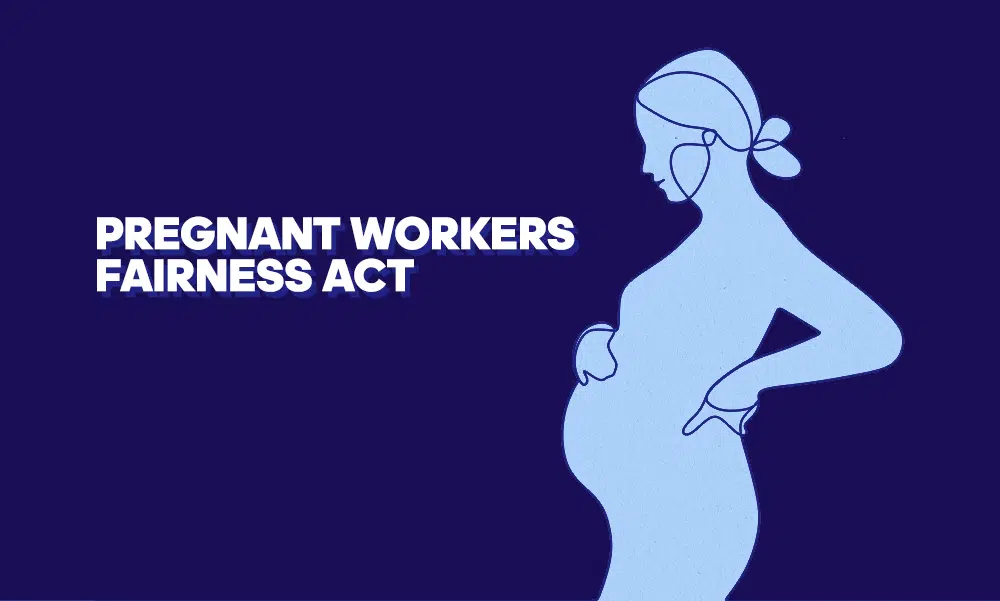The final rule for the Pregnant Workers Fairness Act (PWFA), which applies to employers with 15 or more employees, has been published and takes effect June 18, 2024.
With over 100 pages of preamble, regulations, and interpretive guidance, there’s obviously a lot to take in. Thankfully, you don’t need to spend a whole afternoon reading unless or until you’re considering denying an accommodation—that’s when you should take a close look at what the Equal Employment Opportunity Commission (EEOC) has to say to ensure you’re compliant.
That said, here are some key takeaways to be aware of even if you expect to accommodate most requests.
Some Accommodations Are Presumptively Reasonable
The following accommodations for pregnant employees are presumed to be reasonable, meaning an employer will need an exceptionally good rationale for denying them based on undue hardship:
- Allowing an employee to carry or keep water near and drink, as needed
- Allowing an employee to take additional restroom breaks, as needed
- Allowing an employee whose work requires standing to sit and whose work requires sitting to stand, as needed
- Allowing an employee to take breaks to eat and drink, as needed
So for instance, if a pregnant employee tells you they need more bathroom breaks or to sit on occasion, you should allow it. You’ll want to document the conversation so you have a record of saying yes, but there shouldn’t be a protracted back and forth with the employee about whether their request can be granted. If you believe any of these accommodations do create an undue hardship, we recommend speaking with an attorney before denying them.
Requests for Documentation Are Limited
Employers can only ask for documentation to support a request for accommodation when it’s reasonable under the circumstances. Blanket policies that automatically require documentation aren’t permitted.
In the following situations, seeking supporting documentation is considered unreasonable and isn’t allowed:
- When the limitation and accommodation needed are obvious
- When the employer already has sufficient information to determine that the employee has a limitation and needs an accommodation because of it
- When a pregnant employee requests one of the presumptively reasonable accommodations listed in the section above
- When the employee requests an accommodation related to pumping at work (or nursing, if feasible)
- When the requested accommodation is available to employees with a non-PWFA limitation without providing documentation
When collecting documentation is permitted, employers can only request the minimum amount that confirms the employee’s condition, verifies that it’s related to pregnancy, childbirth, or a related condition, and describes the adjustment that the employee needs.
The Definitions Are Broad (and Might Surprise You)
Known limitations that must be accommodated can be modest, minor, or episodic and don’t need to rise to the level of a disability—they also include medical care, meaning you need to allow time off for appointments. Pregnancy and childbirth include (among other things) infertility, fertility treatment, and the use of contraception. And related medical conditions (among many other things) include termination of pregnancy, including by miscarriage, stillbirth, or abortion.
Employers Can’t Require “Magic Words” or Special Forms
An employee’s request for accommodation can be made orally, in writing, or by any other effective means. Employers can’t require that it be in a specific format or use specific language for them to acknowledge the request. Employers also can’t require that supporting documentation be on a specific form.
Accommodations Should Be Provided Without Delay
Once an employee makes a request for accommodation, the employer should do their best to provide it (or an interim accommodation) as soon as possible, even if supporting documentation will ultimately be required. The EEOC made it clear that they will frown upon delays, particularly with respect to simple or presumptively reasonable accommodations.
If You Thirst for More Knowledge
You can read and word-search the final rule here. The first 87 pages are the EEOC giving background and explaining why and how they responded to public comments. The regulations start on page 88 of the PDF and the Interpretive Guidance, which includes 78 very helpful examples of how the law would be applied in real life, starts on page 94.
Action Items
Make sure your policy addressing the PWFA accurately reflects the regulations. You should also educate your managers (and anyone else likely to receive a request) on the presumptively reasonable accommodations, the limitations on asking for supporting documentation, and the importance of prompt accommodation. If you don’t have high confidence in your managers’ abilities to respond appropriately, you may want to require that anyone who receives a request immediately communicate it to HR.


